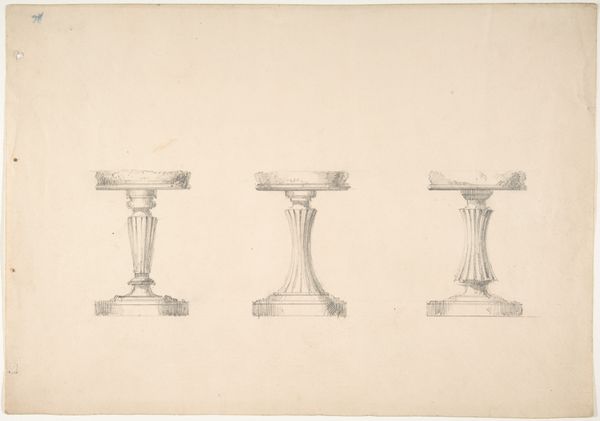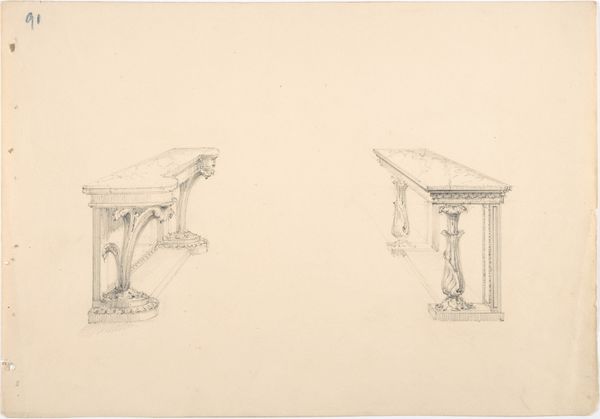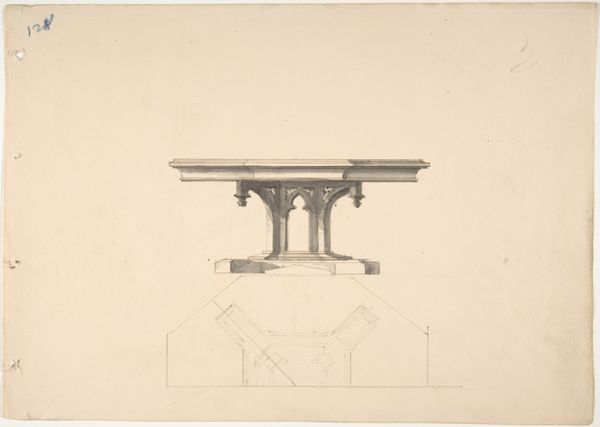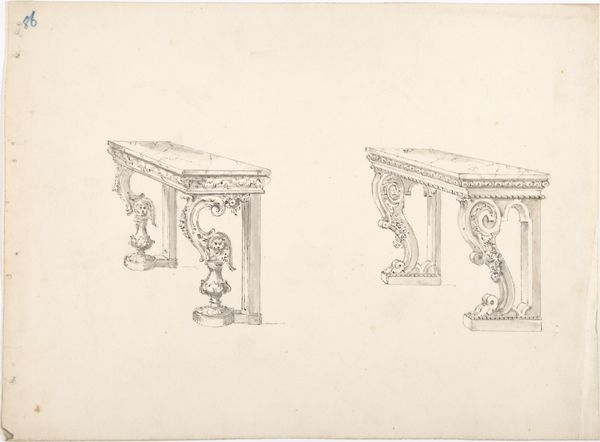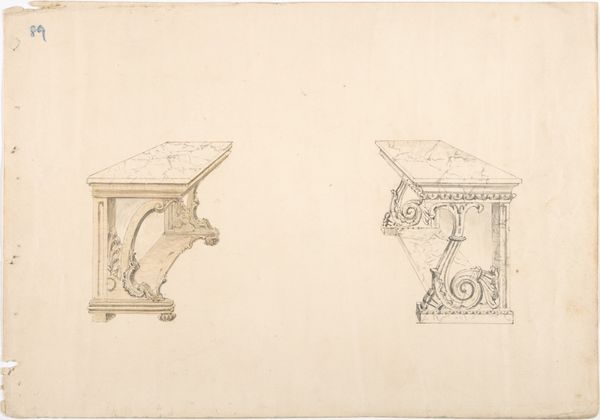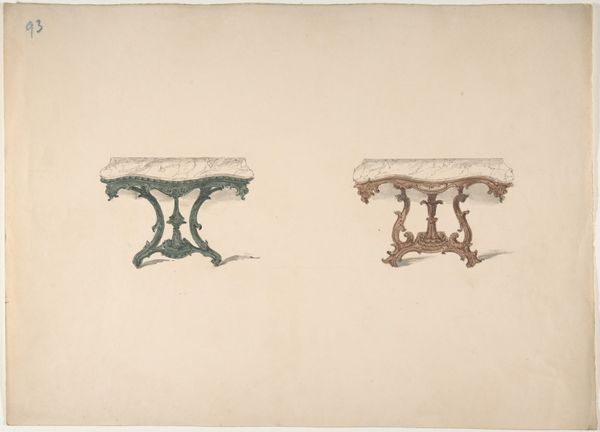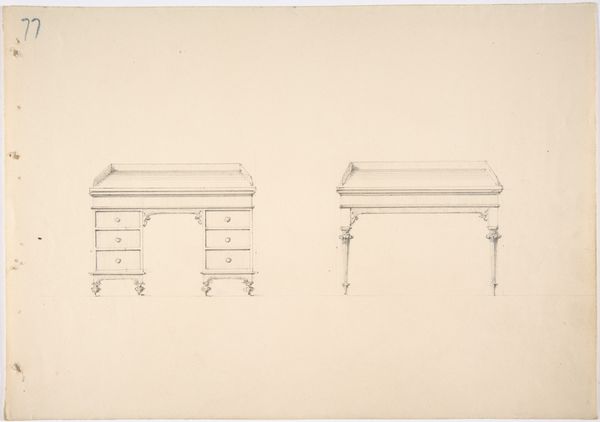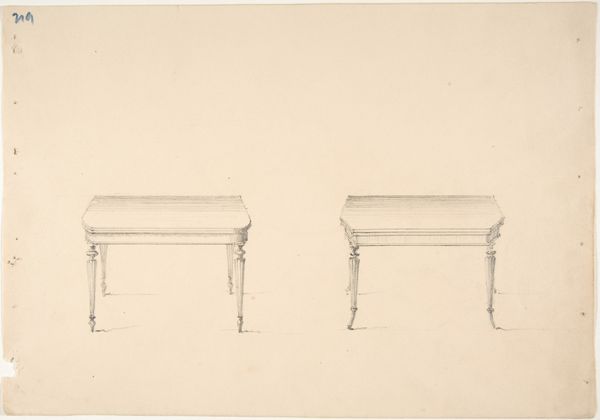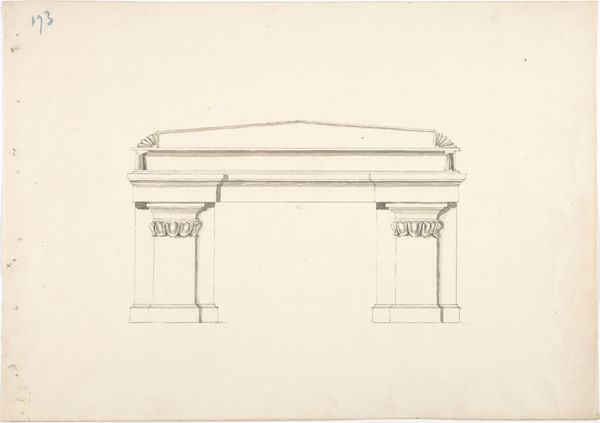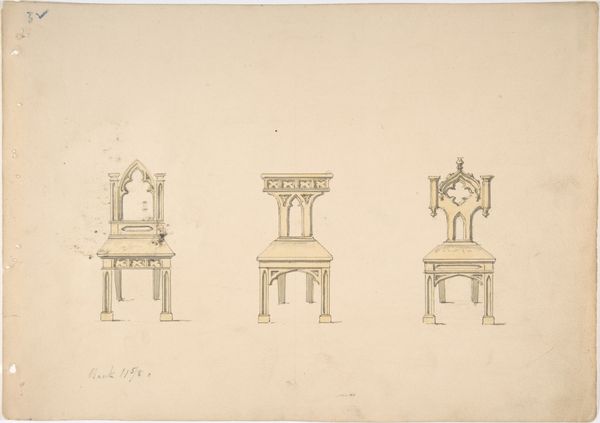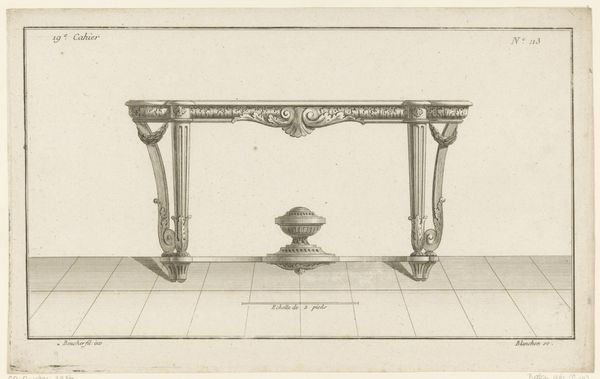
Design for a Small Gothic Pedestal Table and Two Brackets 1800 - 1850
0:00
0:00
Dimensions: sheet: 9 9/16 x 11 7/8 in. (24.3 x 30.2 cm)
Copyright: Public Domain
Curator: The drawing before us, simply titled "Design for a Small Gothic Pedestal Table and Two Brackets," was created anonymously sometime between 1800 and 1850. It employs pencil and print medium and is part of the decorative art collection at the Metropolitan Museum of Art. What’s your initial response to this rendering? Editor: It looks so fragile. The lightness of the pencil gives the proposed table and brackets an ethereal, almost impossible quality. It seems to hover on the page rather than exist as solid, grounded furniture. Curator: Indeed. The Gothic style's revival during the Romantic era reflects a fascination with history and the craftsmanship of the past, often idealizing the Middle Ages as a period of intense spiritual and aesthetic values, especially among elite circles and landed gentry searching for authenticity in design. Editor: It’s intriguing how the artist used the graphic qualities of line to emulate material density and structural form. It makes you consider the labor and craftsmanship involved in even designing a simple table and supporting features. What was this meant to become? Curator: The design would likely have been intended for a wealthy patron looking to furnish their home in the fashionable Gothic Revival style. These weren't just tables and brackets; they were statements about the owner's taste, education, and social standing, all underpinned by economic structures. The gothic architectural movement spoke of hierarchy. Editor: I agree. Thinking about who was employed in constructing such decorative objects, the access to craft, the distribution channels: these tell us so much about the economic realities, class tensions, and material culture of the period, revealing complex relations between the artisan, the patron, and the broader public. Who makes these now? Curator: And beyond that, where do we see remnants of these objects’ influences on gender roles and constructions of domestic life from this period? It evokes reflections on class and design theory. Editor: Exactly. This humble sketch unpacks volumes.
Comments
No comments
Be the first to comment and join the conversation on the ultimate creative platform.
